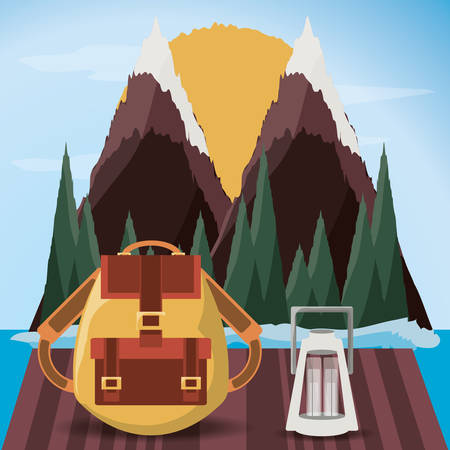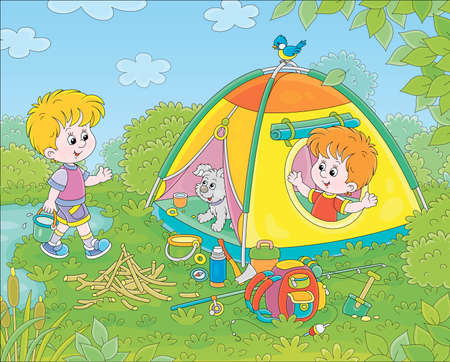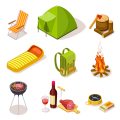Understanding Camping Knife Basics
Before diving into specific blade types, it’s important to understand the basics of camping knives. Not all knives are created equal, and choosing the right one depends on what you plan to do out in the wild. Whether youre prepping food, setting up camp, or handling emergency situations, different knives serve different purposes.
Main Types of Camping Knives
Here’s a quick breakdown of the most common types of camping knives and what they’re typically used for:
| Knife Type | Primary Use | Key Features |
|---|---|---|
| Survival Knife | Emergency situations, self-defense, heavy-duty tasks | Thick blade, full tang, often includes serrations or a sawback |
| Utility Knife | General camp chores like cutting rope, opening gear, and minor woodwork | Lightweight, versatile blade shape, easy to handle |
| Food Prep Knife | Slicing, chopping, and preparing meals at camp | Straight edge, thinner blade for precision cuts |
Fixed Blade vs. Folding Blade
Camping knives generally come in two styles: fixed blade and folding blade. Each has its pros and cons depending on your needs.
| Blade Style | Pros | Cons |
|---|---|---|
| Fixed Blade | Stronger and more reliable for tough tasks; no moving parts to fail | Takes up more space; requires a sheath for safety |
| Folding Blade | Compact and easy to carry; safer to store when not in use | Less durable under pressure; harder to clean thoroughly |
Think About Your Camping Style
The right knife also depends on how you camp. Backpackers might prioritize lightweight tools, while car campers can afford to bring heavier-duty gear. If youre into bushcraft or wilderness survival, a solid survival knife is essential. For casual weekend getaways with family or friends, a utility or food prep knife might be all you need.
Quick Tip:
If you’re unsure what kind of knife you need, start with a basic utility knife—it’s the most versatile and beginner-friendly option.
Up Next:
Dive deeper into different blade shapes and how they affect performance in our next section.
2. Fixed Blade vs Folding Blade Knives
When choosing the right knife for your camping trip, one of the first decisions you’ll need to make is whether to go with a fixed blade or a folding blade. Each type has its own strengths depending on how you plan to use it during your outdoor adventure.
Fixed Blade Knives: Built for Heavy-Duty Tasks
Fixed blade knives are solid, full-tang tools that don’t fold, making them stronger and more reliable for heavy-duty tasks. If youre chopping wood, preparing firewood, or even dressing game, a fixed blade can handle the pressure. They’re also easier to clean since there are no moving parts where dirt and moisture can get trapped.
Advantages of Fixed Blades:
- Stronger and more durable
- Quick access (no unfolding required)
- Easier to clean and maintain
- Better for survival situations
Folding Blade Knives: Lightweight and Portable
If you’re going for a lightweight setup or just need a knife for basic tasks like food prep or cutting rope, a folding knife might be all you need. These knives are compact and easy to carry in your pocket or pack. Many come with locking mechanisms for added safety during use.
Advantages of Folding Blades:
- Compact and easy to carry
- Lightweight—great for backpacking
- Safe storage with folding design
- Good for everyday camp tasks
Quick Comparison Table:
| Feature | Fixed Blade Knife | Folding Blade Knife |
|---|---|---|
| Strength & Durability | High – Ideal for tough tasks | Moderate – Best for light use |
| Portability | Bulky – Requires sheath | Compact – Fits in pocket or pouch |
| Ease of Use | No setup – Always ready to use | Takes time to unfold before use |
| Maintenance | Easier to clean thoroughly | Harder to clean due to moving parts |
| Best For | Bushcraft, survival, food prep, heavy work | Light packing, casual camping, minor tasks |
Your choice between a fixed or folding blade depends largely on what kind of camping experience youre planning. If you expect intense physical tasks or value reliability above all else, go with a fixed blade. If youre aiming for a minimalist trip and only need a knife for occasional use, a folding blade will likely serve you well.

3. Blade Shapes and Their Uses
When youre out camping, the shape of your knife blade can make a big difference in how well it performs different tasks. From cutting rope to preparing food or even batoning wood, each blade shape has its own strengths. Here’s a breakdown of some of the most common blade shapes and what they’re best used for in the great outdoors.
Drop Point Blade
The drop point is one of the most popular blade shapes for camping and general outdoor use. It features a spine that slopes down gently toward the tip, creating a strong and controllable point. This shape gives you a good balance between strength and precision.
Best For:
- General utility tasks
- Food prep
- Whittling or carving wood
- Game processing
Tanto Blade
The tanto blade has a high-strength tip designed with an angular edge, making it ideal for piercing tough materials. While it’s less versatile for slicing or food prep, it shines when durability and tip strength are priorities.
Best For:
- Piercing hard surfaces
- Prying or scraping tasks
- Tactical or emergency uses
Clip Point Blade
The clip point features a concave curve on the back (spine) of the blade, creating a thinner and sharper tip. It’s great for detailed work but not as strong at the tip compared to drop point or tanto blades.
Best For:
- Detailed cutting tasks
- Slicing and controlled cuts
Comparison Table: Blade Shapes at a Glance
| Blade Shape | Main Strengths | Campsite Uses | Drawbacks |
|---|---|---|---|
| Drop Point | Strong tip, balanced design | Food prep, carving, general use | Lacks extreme piercing ability |
| Tanto | Piercing power, durable tip | Prying, heavy-duty use, emergencies | Poor slicing performance, hard to sharpen tip area |
| Clip Point | Sharp tip for detail work, good slicer | Slicing, light cutting tasks, precision cuts | Brittle tip, less durable under pressure |
The right blade shape depends on how you camp and what you do most often out there. Whether youre prepping dinner by the fire or building shelter in a pinch, choosing the right shape makes your knife more than just a tool—it becomes your go-to companion in the wild.
4. Blade Material and Edge Types
When it comes to picking the right blade for camping, the type of steel and edge grind can make a big difference in how your knife performs. Whether youre slicing rope, prepping food, or carving wood, knowing what your blade is made of—and how its shaped—can help you choose the perfect tool for your outdoor adventures.
Common Blade Materials
Different steels offer different benefits like corrosion resistance, toughness, and ease of sharpening. Here’s a quick comparison of common blade materials:
| Steel Type | Durability | Rust Resistance | Ease of Sharpening |
|---|---|---|---|
| Stainless Steel (e.g. 440C, AUS-8) | Good | High | Moderate |
| Carbon Steel (e.g. 1095) | Excellent | Low (needs maintenance) | Easy |
| D2 Tool Steel | Very Good | Medium | Difficult |
| S30V / S35VN | Excellent | High | Difficult |
Understanding Edge Types (Grinds)
The way a blade is ground affects how it cuts and how easy it is to maintain. Here are some popular edge types youll find on camping knives:
| Edge Type | Description | Best For |
|---|---|---|
| Flat Grind | A straight taper from spine to edge; versatile and easy to sharpen. | General use, food prep, carving |
| Scandi Grind | A wide bevel with no secondary edge; great for woodwork and bushcraft. | Batoning, carving wood, fire prep |
| Saber Grind | A partial grind that starts partway down the blade; tough and durable. | Heavy-duty tasks, chopping |
| Hollow Grind | A concave bevel; razor-sharp but less durable under stress. | Slicing, skinning game, precision work |
What to Consider for Your Camping Style
If You’re Backpacking Light:
A stainless steel blade with a flat grind is a great all-around option—it resists rust and is easy to maintain on the trail.
If You’re Into Bushcraft or Survival Skills:
A carbon steel blade with a Scandi grind will give you excellent control for wood carving and fire-starting chores. Just remember to keep it oiled to prevent rust.
If You Need a Heavy-Duty Knife:
D2 or tool steel with a saber grind provides strength and edge retention for tougher jobs like batoning or chopping kindling.
Selecting the right combination of blade material and edge type helps ensure your knife performs well during your outdoor adventures while staying sharp and reliable when you need it most.
5. Matching Blade Type to Camping Style
Choosing the right blade really comes down to how and where you camp. Whether you’re deep in the backcountry, setting up a cozy car camp, or preparing for survival situations, your knife should match your camping style. Let’s break it down so you can find the best fit.
Backcountry Hiking
If youre heading into remote areas with everything on your back, weight and versatility matter most. Look for lightweight folding knives or compact fixed blades that offer multiple functions without taking up too much space.
Recommended Blade Features:
- Lightweight materials (like carbon fiber or polymer handles)
- Straight edge for clean cuts and easy sharpening
- Folding mechanism for compact storage
Car Camping
When youre driving right up to your site, weight isn’t a big concern. This gives you more freedom to bring specialized tools. A larger fixed blade or even a multi-tool knife works great here.
Recommended Blade Features:
- Larger fixed blade for food prep and firewood tasks
- Serrated edge option for cutting rope or branches
- A full tang design for strength and durability
Survival Scenarios
If youre prepping for emergencies or rugged conditions, reliability and toughness are key. A heavy-duty fixed blade with a strong grip is essential here.
Recommended Blade Features:
- Thick, full-tang construction for maximum durability
- MULTI-purpose blade shape (drop point or tanto)
- Synthetic, grippy handle material like G10 or rubberized grip
Quick Comparison Guide
| Camping Style | Blade Type | Key Features |
|---|---|---|
| Backcountry Hiking | Lightweight Folding Knife | Compact, straight edge, easy to carry |
| Car Camping | Fixed Blade / Multi-tool | Full tang, serrated options, more robust tools |
| Survival Situations | Heavy-Duty Fixed Blade | Thick spine, drop/tanto point, durable grip |
The right knife makes every task at camp easier—from slicing food to making kindling. Think about how you camp most often, and let that guide your choice. The better your blade matches your adventure, the smoother things go out there.
6. Safety and Legal Considerations
Choosing the right blade for your camping trip isnt just about function—its also about safety and legality. Whether youre packing a folding knife, fixed blade, or multi-tool, understanding how to handle it safely and knowing the laws in your area is essential for a smooth outdoor experience.
Knife Safety Tips for Campers
Using a knife responsibly is key to preventing injuries. Here are some basic safety practices every camper should follow:
| Safety Tip | Description |
|---|---|
| Keep It Sharp | Dull blades require more force and can slip more easily, causing accidents. |
| Cut Away From Yourself | Always cut in a direction away from your body to avoid injury. |
| Use a Stable Surface | When cutting food or wood, use a solid surface to keep the blade steady. |
| Store Properly | Use a sheath or case to store knives when not in use to prevent accidental cuts. |
| Keep Out of Childrens Reach | Teach kids about knife safety and never leave sharp tools unattended around them. |
Understanding U.S. Knife Laws by State
Laws regarding knives can vary widely across the United States. Some states restrict blade length, while others may prohibit certain types like switchblades or butterfly knives. Before heading out on your camping trip, check local laws to ensure you’re compliant.
Common Legal Restrictions to Look Out For:
- Blade Length Limits: Many states limit carryable blade lengths to under 3 or 4 inches.
- Banned Knife Types: Switchblades, automatic knives, and balisongs are illegal in some areas.
- Concealed Carry Rules: Even if a knife is legal, carrying it concealed might be restricted.
- Parks & Federal Land: National and state parks may have their own rules separate from state law.
Example: Knife Law Comparison Table (By State)
| State | Max Blade Length (Carry) | Banned Types | Concealed Carry Allowed? |
|---|---|---|---|
| California | Under 2.5″ for concealed carry | Switchblades over 2″ | No (for certain knives) |
| Texas | No restriction (except for minors) | N/A | Yes (with exceptions) |
| New York | No fixed limit but strict enforcement | Gravity knives, switchblades | No (generally discouraged) |
| Florida | Under 4″ | Balisongs in some counties | Yes (depending on intent) |
| Washington State | No specific length but local laws apply | Spring-loaded knives, daggers in some cities | No (limited situations only) |
The best way to stay safe and legal is to research the specific regulations of the state and park youre visiting. When in doubt, opt for a simple folding knife with a blade under 3 inches—it’s usually acceptable in most places and still gets most camp tasks done efficiently.


